It’s been twenty years since two women first kissed on a prime time television series. (To find out which show, read on.)
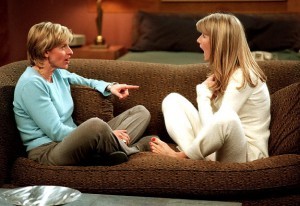 So to celebrate, here’s a brief chronology of girls-who-like-girls characters in TV and film. While many such story lines are produced to merely titillate audiences (see Virginia Heffernan’s 2005New York Times article on television series using lesbian subplots during sweeps week), I can’t deny that these shows also opened up a larger dialogue in our culture. Here are some of the most positive examples of girl love from the past two decades:
So to celebrate, here’s a brief chronology of girls-who-like-girls characters in TV and film. While many such story lines are produced to merely titillate audiences (see Virginia Heffernan’s 2005New York Times article on television series using lesbian subplots during sweeps week), I can’t deny that these shows also opened up a larger dialogue in our culture. Here are some of the most positive examples of girl love from the past two decades:
1991: L.A. Law delivers the first on-screen girl-on-girl kiss in the episode, “He’s a Crowd.” Here’s how it goes down: Abby and C.J. (played by Michele Greene and Amanda Donohue, respectively) share a meal together after Abby is turned down for a partnership at the firm. Afterward, they kiss outside in a parking lot. C.J. identifies herself as “flexible” (possibly the first character to ever use that term on television) while Abby considers herself completely heterosexual. Although this subplot doesn’t go very far (and was mostly used as a ratings ploy), I have no doubt that without it the list that follows probably wouldn’t exist.
1996: While the ten-year run of Friends did not primarily feature a lesbian relationship, the episode known as “The One With the Lesbian Wedding” is quite a milestone. Long before the legalization of gay marriage and civil unions, Carol and Susan walked down the aisle and declared their love in a relatively traditional ceremony. On a particularly sweet note, Ross, Carol’s ex, offers to give her away in lieu of her father who disapproved of the marriage.
1997: Ellen DeGeneres as Ellen Morgan comes out on Ellen in the now-infamous “Puppy Episode.”While the show’s ratings suffered and DeGeneres’s own personal revelation that she is gay set off a major backlash, it wasn’t long before she was back on top—hosting the Emmys in 2001, performing a new stand-up comedy routine on HBO, and of course, launching her daytime talk show, The Ellen DeGeneres Show. Oh and need I mention marrying one of the most gorgeous women alive, Portia De Rossi? She’s also a Cover Girl—which is both a milestone and an awesome slap in the face to her critics.
1999: Our first feature film on the list is none other than But I’m a Cheerleader. Now considered something of a cult classic, this Jamie Babbit film not only featured a lesbian couple, but a lesbian couple at a “gay rehabilitation center.” Graham (Clea DuVall) and Megan (Natasha Lyonne) are in high school when their parents send them to True Directions (the name is so ridiculous it’s meant to be laughed at). I not only give this movie props for its frankness and humor but also for giving us a happy ending. It is one of the few lesbian-centric films that does not feature one of its characters going straight or dying some untimely death. (Two sadly common plotlines.) Thanks, Jamie Babbit for inventing the lesbian romantic comedy. (Also check out her 2007 flick, Itty Bitty Titty Committee, also with a happy ending.)
1998: In High Art, a heroin-addicted lesbian photographer, Lucy (Ally Sheedy) gets involved with Syd (Radha Mitchell), a shy girl-next-door. It’s the ultimate in escapism for both parties and naturally, given the subject matter, the cinematography is both breathtaking and surreal as the women create their own world, separate from their realities. Unfortunately, the reality of drug addiction proves too powerful to ignore. While it does fit into a certain depressing stereotype, High Art still deserves recognition for how it addressed the homosexual desires of a supposedly straight character—as awkward, thrilling, and overwhelming as they are in real life.
1998: Incredibly heartbreaking, but a story so worth telling, Gia not only grapples with same-sex attraction but drug abuse, self-destruction, and HIV/AIDS. The real-life supermodel, Gia Carangi was known for her tenacity and passion, and those closest to her knew of her attraction to women. Even in Gia’s darkest moments—whether losing her lover or falling short of kicking her addictions—the film is riveting from start to finish. You simply cannot take your eyes off her, and not just because she’s played by Angelina Jolie. (Of course, it doesn’t hurt that Jolie won a Golden Globe for her performance.)
2000: This retrospective wouldn’t be complete without mentioning the monumental series, Queer as Folk. It helped turn “queer” into a household (not to mention positive) term in the early 2000s. While there was only one central lesbian couple on the show, Melanie and Lindsay spiced up the group dynamic. During the show’s five-year span, they had two children, got married, separated and reconciled twice, and led successful careers. This couple ran through the gamut of emotional highs and lows, making them feel particularly genuine.
2001: Buffy the Vampire Slayer earns a space on the list as featuring a two-and-a-half year relationship between female characters, Willow and Tara. Clearly, this storyline was not just for the ratings.
2004: The L Word. The first all-girl, all-lesbian/bisexual television series. The L Word picked up the banner that Queer as Folk started carrying four years earlier. These characters were just like any other dysfunctional group of friends—except they liked girls. Oh and they were all wildly successful and lived incredibly well in expensive Los Angeles. It tackled difficult subjects, too—child rearing, affairs, cancer, gays in the military, to name a few. I’d like to believe that it will pave the way—if it hasn’t already—to more series and films, albeit with a little less underwear and a little more realism.
2005: Oh those California girls of The O.C. While I admit the teenage soap opera is one of my favorite guilty pleasures, I have to call the show out on its cheap use of girl-likes-girl storyline in season 2. Marissa (Mischa Barton) and Alex (Olivia Wilde) have a brief affair and share a couple of smooches on screen. No sooner do they get together then Alex leaves Newport Beach and Marissa ends up back with her true love, Ryan Atwood. Huh? Sounds like someone (cough, Marissa, cough) was killing time before her former BF was conveniently available again. Of course, when I first watched the budding Marissa-Alex romance, I was excited—ready to stamp my seal of approval on any mainstream television show that had the guts to feature a gay couple. And that enthusiasm is probably how I justify owning all four seasons on DVD.
2008: Grey’s Anatomy hooked its huge following with some good old-fashioned relationship drama. In season 4, however, the show took an unexpected detour from the roads of McDreamy and McSteamy when Dr. Callie Torres (Sara Ramirez) began a relationship with Erica Hahn (Brooke Smith). Together, they embark on their first same-sex relationship. Unfortunately, while Erica embraces her newfound sexual identity, Callie does not. But have no fear—in season 5, Callie finds a new love interest in Arizona Robbins (Jessica Capshaw)—and the courage to face her feelings. The couple has overcome many obstacles—from disapproving parents to deciding whether or not to have children. After much struggle and heartache (as only Grey’s Anatomy can deliver), the couple finally wed in season 7. Much like Melanie and Lindsay of Queer as Folk, Callie and Arizona are another great example of a lesbian couple in a long-term relationship with its many ups and downs, like any of their straight counterparts.
2010: Nic (Annette Bening) and Jules (Julianne Moore) seem like the run-of-the-mill lesbian couple with two kids and a white picket fence in The Kids Are All Right. The only monkey wrench? Their kids are about to discover their sperm donor father. While this film caught some criticism for the lesbian-has-an-affair-with-a-man plot, I commend it for its portrayal of a marriage (in nearly every sense of the word, these women are married) that has been strained. Julianne Moore’s monologue on struggling to keep it all together is so moving, anyone can relate—gay, straight, or otherwise. Interesting trivia? This film was written and directed by Lisa Cholodenko, the same woman who wrote and directed High Art. Unlike her earlier effort, The Kids Are All Right was widely recognized in the mainstream media and was even nominated for several Academy Awards.
To the writers, producers, and actresses of these shows and films, bravo.
![]() Women in Afghanistan still suffer some of the worst gendered conditions in the world: forced marriages, lack of education, and conditions far beyond anything we can encapsulate in even those awful-sounding soundbites. One of our favorite organizations works to empower women there through fostering and publishing their writing about their lives, the Afghan Women’s Writing Project. Another idea: Giving women there economic power by fostering sales of their crafts. Read more at The Daily Beast’s Women in the World.
Women in Afghanistan still suffer some of the worst gendered conditions in the world: forced marriages, lack of education, and conditions far beyond anything we can encapsulate in even those awful-sounding soundbites. One of our favorite organizations works to empower women there through fostering and publishing their writing about their lives, the Afghan Women’s Writing Project. Another idea: Giving women there economic power by fostering sales of their crafts. Read more at The Daily Beast’s Women in the World.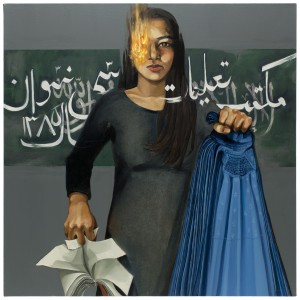 Looking at the painting, “Girl Under the Taliban,” (left) by Hangama Amiri is like being slapped across the face with a reality check. In it, a young woman sears a determined stare into the viewer’s mind with one eye while the other burns with fire. She’s clutching a textbook in one hand and a burqa in the other. It assaults you with its literal message of oppression, but confounds even more with its rich complexity. It’s the story of Nargis, a 13-year-old Afghan girl banned from seeking education under the Taliban. It is not a unique story, but it’s one that isn’t being told nearly enough.
Looking at the painting, “Girl Under the Taliban,” (left) by Hangama Amiri is like being slapped across the face with a reality check. In it, a young woman sears a determined stare into the viewer’s mind with one eye while the other burns with fire. She’s clutching a textbook in one hand and a burqa in the other. It assaults you with its literal message of oppression, but confounds even more with its rich complexity. It’s the story of Nargis, a 13-year-old Afghan girl banned from seeking education under the Taliban. It is not a unique story, but it’s one that isn’t being told nearly enough.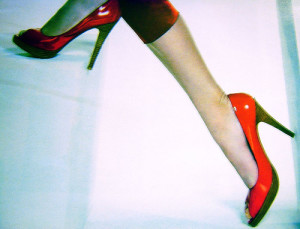 Canadian Judge Doesn’t Send Rapist To Jail Because “Sex Was In The Air”: In a case where the woman was wearing (gasp!) a tube top with no bra, high heels, and “plenty of makeup,” it was more OK for the man she was with, Kenneth Rhodes, to force intercourse with her on a dark highway. At least that’s what Queen’s Bench Justice Robert Dewar decided. Poor guy; he was just a “clumsy Don Juan.” He sure was clumsy — he left a permanent scar on the victim’s knee from the the attack. But “Protection of society is not advanced one iota by putting Mr. Rhodes in jail,” Dewar said. That’s where he is oh, so wrong.
Canadian Judge Doesn’t Send Rapist To Jail Because “Sex Was In The Air”: In a case where the woman was wearing (gasp!) a tube top with no bra, high heels, and “plenty of makeup,” it was more OK for the man she was with, Kenneth Rhodes, to force intercourse with her on a dark highway. At least that’s what Queen’s Bench Justice Robert Dewar decided. Poor guy; he was just a “clumsy Don Juan.” He sure was clumsy — he left a permanent scar on the victim’s knee from the the attack. But “Protection of society is not advanced one iota by putting Mr. Rhodes in jail,” Dewar said. That’s where he is oh, so wrong. Given the early coverage before the debut of Comedy Central’s Inside Amy Schumer this spring, I figured we were in for another dirty-girl comedian — Schumer was most often compared to Whitney Cummings and Sarah Silverman. I don’t dislike either of those ladies, but both of them, when at their best, retain the whiff of women trying to make it in a man’s comedy world. Of course, it is a man’s comedy world, and I can’t blame them, and I loooved every bit of the shock value of The Sarah Silverman Program. (I also happen to enjoy the show Cummings co-created, 2 Broke Girls. We won’t talk about Whitney.) Cummings and Silverman do the comedy equivalent of business women wearing hyper-masculine, shoulder-padded suits in the ’80s as they fought their way to boardroom levels: They made it in an astonishingly male-dominated profession by out-boying the boys.
Given the early coverage before the debut of Comedy Central’s Inside Amy Schumer this spring, I figured we were in for another dirty-girl comedian — Schumer was most often compared to Whitney Cummings and Sarah Silverman. I don’t dislike either of those ladies, but both of them, when at their best, retain the whiff of women trying to make it in a man’s comedy world. Of course, it is a man’s comedy world, and I can’t blame them, and I loooved every bit of the shock value of The Sarah Silverman Program. (I also happen to enjoy the show Cummings co-created, 2 Broke Girls. We won’t talk about Whitney.) Cummings and Silverman do the comedy equivalent of business women wearing hyper-masculine, shoulder-padded suits in the ’80s as they fought their way to boardroom levels: They made it in an astonishingly male-dominated profession by out-boying the boys. Talented Friend of Sexy Feminist Lauren Ramidrew this tremendous illustration of a Soul Train dancer (don’t you want to frame it and put it in some inspirational place in your apartment?) in homage to the women she loves to watch on the quintessential ’70s dance show. She wrote us a guest post about what inspired her.
Talented Friend of Sexy Feminist Lauren Ramidrew this tremendous illustration of a Soul Train dancer (don’t you want to frame it and put it in some inspirational place in your apartment?) in homage to the women she loves to watch on the quintessential ’70s dance show. She wrote us a guest post about what inspired her.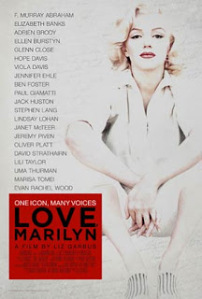
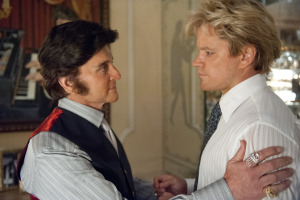
 Pop quiz: Whom is the show Game of Thrones“made” for?
Pop quiz: Whom is the show Game of Thrones“made” for?

 So to celebrate, here’s a brief chronology of girls-who-like-girls characters in TV and film. While many such story lines are produced to merely titillate audiences (see Virginia Heffernan’s 2005New York Times
So to celebrate, here’s a brief chronology of girls-who-like-girls characters in TV and film. While many such story lines are produced to merely titillate audiences (see Virginia Heffernan’s 2005New York Times 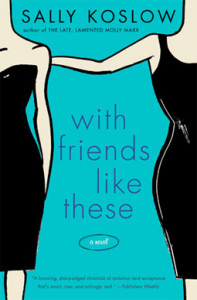 Sally Koslow’s latest novel,
Sally Koslow’s latest novel,